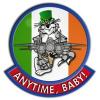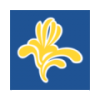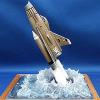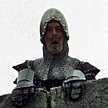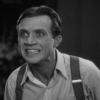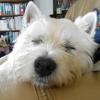Search the Community
Showing results for tags 'Lysander'.
-
I'm starting a new project, a 1/48 Lysander Mk III target tug, in the 'Oxydol' scheme. I'm using the Gavia kit, and have started on the big differences with the RCAF Lysanders ... the tubular seat bottom from stretched sprue replaced the aft floor with one with the hatch the electric winch ... and the extended exhaust pipe with the cabin heater muff (made from heated and bent sprue) when I get to the exterior, I'll be adding the tail guard cables, the wooden belly doors etc. I still cannot find any info on the winch operators seat, or the rear shelf behind the observer (size, what was on it, etc.) Any help would be appreciated! Colin
-
LX-W, No.225 Sqn RAF, I just need a serial. More zoom-in-able pics available at IWM: CH 1174 CH 1180 CH 1185 CH 1186 CH 1191 CH 1193 CH 1198 CH 1201 Thanks!
- 11 replies
-
- No. 225 Sqn
- RAF
-
(and 1 more)
Tagged with:
-
Hi all and here's some plastic nostalgia courtesy of Matchbox built for the Matchbox GB here. This one is almost as old as me, stamped '1973' on the inside of the fuselage. Had great fun with it and just to sum up: Kit: Matchbox PK-7 Paints: Revell Acrylics, Tamiya, Klear, Flory Models Wash, W&N Matt varnish Decals: Max Decals 72-002 (OOP) and Airfix Extras: Added joystick, fuel tank, instrument panel, windows at tail, lights in wheel spats. Thanks for looking and happy modelling. Cheers, Dermot Matchbox_172_Lysander_Irish_Air_Corps_done (7) by Dermot Moriarty, on Flickr Matchbox_172_Lysander_Irish_Air_Corps_done (6) by Dermot Moriarty, on Flickr Matchbox_172_Lysander_Irish_Air_Corps_done (12) by Dermot Moriarty, on Flickr Matchbox_172_Lysander_Irish_Air_Corps_done (11) by Dermot Moriarty, on Flickr Matchbox_172_Lysander_Irish_Air_Corps_done (9) by Dermot Moriarty, on Flickr Matchbox_172_Lysander_Irish_Air_Corps_done_(18) by Dermot Moriarty, on Flickr
- 11 replies
-
- 55
-

-
- Irish Air Corps
- matchbox.
-
(and 1 more)
Tagged with:
-
Westland Lysander by Dora Wings. Modelled after the RAF contingent in Egypt in 1941-2, possibly at Ma'aten Bagush where my dad was stationed for a while. IMGP0209a by Sandeha Lynch, on Flickr IMGP0210a by Sandeha Lynch, on Flickr Period photo from the IWM: https://www.iwm.org.uk/collections/item/object/205209180 And one from my dad's negatives: nass39-11 by Sandeha Lynch, on Flickr Yes, it was not an easy one, though I did better on it than the Blenheim IV in the distance which really doesn't warrant a closer look, hence the wide open aperture !! To be fair, I think if I'd anticipated how much subtle trimming would be needed the fit would not have bothered me too much, but sometimes it was a case of, "Oh, that's irritating", followed by, "Ah, so is that". On the other hand, this was the first I've done with canopy masks, which takes some practice. I have a photo project on at the moment so it may be some time before I get back to the bench.
-
Have heard via the grapevine that Eduard are releasing the Lysander as a special edition, can anyone confirm? Dave
-
Westland Lysander Mk.III (SD) (72024) 1:72 Dora Wings via Albion Alloys The Lysander was developed by Westlands in response to an Air Ministry requirement form and Army Co-operation aircraft in the 1930s. After interviewing pilots it was decided that field of view, low speed handling and a Short Take Off/landing aircraft would be needed. To accomplish this the Lysander would feature a high mounted wing with a large glazed cabin. The wing would feature fully automatic slots and slotted flaps. These would be complemented with a variable incidence tailplane. These would bring the stalling speed of the aircraft down to 65mph. The Lysander would enter service in 1938. However it was found that even when escorted by fighters the slow aircraft was an easy target for enemy fighters. Of the 175 aircraft deployed to France 118 were lost. After the fall of France other uses were sought for the aircraft though Coastal Patrol and further Army Co-operation were ruled out. due to the lack of aircraft in general Lysanders would fly patrols in case of invasion and would be equipped with light bombs if an invasion ever came. However this was not to be the end for this aircraft. Lysanders would be used as an interim aircraft for Search & Rescue carrying liferaf continers on the stub wings. In 1941 the RAF formed No. 138 (Special Duties) Squadron with the aim of delivering SOE Agents and supplies into occupied Europe, The Lysanders remarkable low landing speed and ability to land on unprepared surfaces made it an ideal aircraft for this role. Lysanders used in this role would feature no armament, a long range fuel tank, and a fixed entry ladder. A few aircraft were also used as Target Tugs. Overall 1786 aircraft were built including 225 manufactured in Canada. The Kit A new tool Lysander in 1.72 has been sadly lacking and thankfully Dora Wings have now resolved this. This is a new tool kit on five sprues of grey plastic, a clear spure, with resin and PE parts supplied. A good touch is the inclusion of masks for all that glazing! The kit second kit from Dora Wings is the Mk.III General use aircraft. To start off with the sub assemblies for the engine, internal fuel tank, and tailplanes are made up and put to one side. The engine is quite detailed for the scale with many parts making up the finished part. The internal frame structure for the main fuselage is then built up. This can then be installed in the main fuselage and it can be closed up. The glazing and rear part of the fuselage are then added to the main fuselage, the fixed boarding ladder is added, then the engine and propeller are added to the front. The main wings are then built up with the flaps being added. The main landing gear is then built up. There are 4 part main wheels with covers to each side of the wheel spats. A solid tail wheel is provided with its yoke. The wings, tailplanes, and rudder are then added to the main fuselage. The wheels spats and with braces are added along with the stub wings and their bombs to finish things off. Markings The decals are from Decograf and look good with no registration issues, there are four decal options provided; V9441 - 309 (Polish) Sqn RAF, Dec 1940 V9618 - 754 RNAS - RNAS Arbroth Sept 1941 T1636 - 276 Sqn RAF- SAR Duties 1942 V8547 - 277 Sqn RAF - SAR Duties Spring 1942 Conclusion This is certainly a kit modellers of British WWII aircraft in 1/72 have been waiting for. Very highly recommended. Available in the UK in most good model shops. Review sample courtesy of
-
Westland Lysander Mk.III (SD) (72023) 1:72 Dora Wings The Lysander was developed by Westlands in response to an Air Ministry requirement form and Army Co-operation aircraft in the 1930s. After interviewing pilots it was decided that field of view, low speed handling and a Short Take Off/landing aircraft would be needed. To accomplish this the Lysander would feature a high mounted wing with a large glazed cabin. The wing would feature fully automatic slots and slotted flaps. These would be complemented with a variable incidence tailplane. These would bring the stalling speed of the aircraft down to 65mph. The Lysander would enter service in 1938. However it was found that even when escorted by fighters the slow aircraft was an easy target for enemy fighters. Of the 175 aircraft deployed to France 118 were lost. After the fall of France other uses were sought for the aircraft though Coastal Patrol and further Army Co-operation were ruled out. due to the lack of aircraft in general Lysanders would fly patrols in case of invasion and would be equipped with light bombs if an invasion ever came. However this was not to be the end for this aircraft. In 1941 the RAF formed No. 138 (Special Duties) Squadron with the aim of delivering SOE Agents and supplies into occupied Europe, The Lysanders remarkable low landing speed and ability to land on unprepared surfaces made it an ideal aircraft for this role. Lysanders used in this role would feature no armament, a long range fuel tank, and a fixed entry ladder. A few aircraft were also used as Target Tugs. Overall 1786 aircraft were built including 225 manufactured in Canada. The Kit A new tool Lysander in 1.72 has been sadly lacking and thankfully Dora Wings have now resolved this. This is a new tool kit on five sprues of grey plastic, a clear spure, with resin and PE parts supplied. A good touch is the inclusion of masks for all that glazing! The kit is of the Mk III Special Duties aircraft. To start off with the sub assemblies for the belly fuel tank, internal fuel tank, and tailplanes are made up and put to one side. Construction then concentrates on the engine. This is quite detailed for the scale with many parts making up the finished engine. The internal frame structure for the main fuselage is then built up. This can then be installed in the main fuselage and it can be closed up. The glazing and rear part of the fuselage are then added to the main fuselage, the fixed boarding ladder is added, then the engine and propeller are added to the front. The main wings are then built up with the flaps being added. The main landing gear is then built up. There are 4 part main wheels with covers to each side of the wheel spats. A solid tail wheel is provided with its yoke. The wings, tailplanes, and rudder are then added to the main fuselage. The wheels spats and with braces are added along with the external tank to finish things off. Markings The decals are from Decograf and look good with no registration issues, there are three decal options provided; V9287 No.161 (SD) Sqn RAF Tempsford 1942 VS367 No.161 (SD) Sqn RAF Tempsford 1944 V9289 No. 357 Sqn, Burma 1945 Conclusion This is certainly a kit modellers of British WWII aircraft in 1/72 have been waiting for. Very highly recommended. Review sample courtesy of
-
Hi, everybody! I present you my next model.
-
Dear fellow Britmodellers, here's my 1/72 Dora Wings Lysander Mk.III (SD), with decals from DK Decals sheet "No.161 (SD) Squadron". Painted with Gunze/Mr.Hobby acrylics, photographs by Wolfgang Rabel. A full build review will appear in an upcoming edition of Scale Aviation Modeller International.
- 23 replies
-
- 61
-

-

-
- Dora Wings
- Lysander
-
(and 1 more)
Tagged with:
-
Hello everyone... I normally don't venture into civil aircraft to often, but had some questions about Westland Lysander's. Did anyone ever use these as Bush planes post war ? Possibly in Canada, Alaska, Australia, New Zealand, or in Africa ? It seems like the type would have been perfectly suitable for bush flying ? If so does anyone know of any photo's or maybe profiles ? Also does anyone know whether or not they could be mounted on floats ? Dennis
-
A short break from other projects. The one who takes care of the Sir William Stevenson display at the Air Command HQ here in Winnipeg's 17 wing asked me to repair a few models for display. Sir William Stevenson has an interesting story and history and became the inspiration for the writing of James Bond, he is also from Winnipeg and the airport is named after him. I actually never read much on him which I guess is pretty bad for me. The models are two 1/48 Hawk Lysanders and an unknown maker of a Sopwith Camel. One Lysander is a repair that someone else made. The other needs to be built complete except the fuse and cockpit were put together already. The Camel arrived broken during shipping. It's a great model, pre built and lots of detail, the wheels are actual wire spokes. It's covered in an actual fabric. Guessing it's 1/32. I will have a Lancastrian and a Mosquito to make soon to go with these on display. These are to be representative of aircraft used by William Stevenson. I was told of some of his firsts and adventures but can't remember them well enough to write them here, so I'll let you look into it. Here's what was given to me. I painted the Lysander with Humbrol 26 and didn't like it, seemed way to dark, so I went with Humbrol 29. The green is Humbrol 119. I kind of did roughly my own masking for the camo. I saw so many variations and the models not the greatest either. The little tabs coming off the canopy to the wings broke on both planes. I made two new spars from 1/8" brass rod, notched the top canopy till it fit over them and epoxied it all in. I also made a small brass pin in the landing gear base where the bottom of the struts attach. I can't see this model going together without that. Italeri's Lysander is the same kit I found out. Other than those needed repairs it's straight from the box. Here it is with some Future floor wax sprayed on for the decals. The brown sure looks different with gloss on. Not used to 1/48 kits and not used to camo painting, been awhile. Because my airbrush won't do a super clean edge without a lot of overspray(maybe it's just me), the edges of the tape were left peeled up just a bit so the paint would leave a slight feathered edge.
-
When I built my Air-Sea Rescue Avro Anson last year as part of the "Aircraft my Father fixed" series, I did a lot of research on the underwing dinghy stores that it was supposed to have carried. Lacking any definitive pictures of the Anson so equipped I relied upon some photos of Lysanders with pylon equipped dinghy stores. It seemed an obvious extension to then get hold of a Lysander and build one equipped the same way! So I did... I managed to get hold od an old Testors/Hawk kit: Which, although basic was IMO good enough for what I wanted to do. Elsewhere on this forum you'll find a quite awesome upgrade of this kit from hendie over here: http://www.britmodeller.com/forums/index.php?/topic/235001898-148-lysander-mk-ii-1960s-hawk-version-can-i-have-a-transfer-please-bob I can't hope to match that level of craftsmanship, but here is my little contribution to the subject. I replaced the figures in the kit with one from PJ Productions for the pilot and another from the spares box for the gunner. The dinghy stores were scratch built. I opened up the landing lights forward of the wheels and capped them with some shaped acrylic rod. and I replaced the propellor with a photoetch prop-blur to add some visual interest. So here it is... I can't say its one of my best, but after the stress of the Oil Platform and Eagle Transporter builds over the summer leading up to Telford, it was nice to get back to something simple and pleasing!
- 10 replies
-
- 29
-

-
Hi mates, This year's "Greatest Show on Turf" didn't feature as many aircraft as some previous years (quite a few that were scheduled were scratched in the days preceding due to mechanical and logistic issues), but we were treated to the return of the P-38 and Lysander (which hadn't visited in many years) and most exciting - the de Havilland Mosquito, one of only two (I believe) flying examples of the Wooden Wonder. One thing that never changes year over year is my inability to pose as a good photographer. So apologies in advance for the poor in-air shots - I don't know if it's me, my camera (which is nothing fancy), the hot and humid western NY weather (about 90 degrees F), or some combination of the above, but I can guarantee that Life magazine won't be calling me anytime soon! The show is put on by the 1941 Historical Aircraft Group from Geneseo, NY, which is just south of Rochester, NY. The show is dedicated to warbirds, and almost always with propellers! The landing strip is natural turf, and the setting is bucolic, nestled in the rolling farmlands of the upper Finger Lakes region. So on with the pictures! First, the Lysander: The Stinson Reliant (check out the cockpit photos later on!): Rob Holland MX2 Aerobatics (I have no clue how an airplane can be made to do the things he did, or how his brains stayed inside his head during these maneuvers - amazing pilot!): Lockheed P-38J Lightning: Two P-51 Mustangs and an F4U Corsair that are annual visitors to the show: The Lightning, Corsair, and Mustangs formed up for the traditional "Missing Man" flyby, in honour of our veterans: Back on the ground, "Whiskey 7" (the C-47 owned by the 1941 Historical Aircraft Group) is back from her visit to Normandy for the D-Day activities: And she was joined by another example from Canucks Unlimited in Canada: Next on the flightline was the Mosquito! Flight crew preparing for her demonstration: But first, the parade of antique cars! Away she goes, with me just about to get hit with the prop wash as she makes her turn onto the "taxi-way" - hang on to your hat: Also starting up was the B-25: The Mossie in the air: The B-25 making a watermelon "bombing run" Another annual visitor is this replica Val, which was used in the film "Tora, Tora, Tora:" On display was this An-2: B-25 taxiing back from her bombing run: And the Corsair as well: Some shots of the P-38: I thought it was odd that the exhaust staining was a different colour on port and starboard engines: I wonder if this was what is meant by the lyric "o'er amber waves of grain" Gotta love those high-speed, low altitude passes: The Grumman Avenger was back this year, sporting some new nose art: Several Stearman biplanes flying and on display: Some more shots of the Lysander: Someone will have to tell me what this is (the nice young lady was doing her make-up, and I didn't want to interrupt her to ask): The Stinson Reliant, 1930s-style luxury flying (I love the red leather upholstery and the mahogany instrument panel): Chrome boarding ladder! Lots of chrome upfront, too: I'm also not sure what this is: Or this one: Another plane that is new to me - but the nose art is catchy! As always, many T-6 Texans and Harvards visited the show, and here are just a few: Whiskey 7 and the Liberty Jump Team provided a paratrooper drop, just like the ones they did over in Normandy: And, of course, an airshow would not be complete without vendors to sell us all this cool stuff! And lastly, I need Harry Lime to translate this shirt for me! I only captured a small part of the overall show, but I think this gives you an idea of the calibre of this show. If you ever find yourself in western New York in July, this is one airshow that's really worth looking for! Cheers, Bill
-
I've had the Eduard/Gavia Lysander sat half-finished for some while because I blindly trusted Eduard's research and built the rear cockpit as instructed apart from some scratchbuilt details. I was almost ready to close it up when I read a post here, I think, which mentioned the mods made to the SD unit's aircraft. It's too late to scratch them now, so before I resign myself to completing it as a standard version, do any smart chaps here know whether all of the SD planes were converted? If some were not, my vignette idea can go ahead, but I like to be as accurate as I can. Ade.
-
Being a newbie on Britmodeller (love it) re-visiting his youth, I’m just really getting going again on enjoying building model kits. With my Dad passing on, 10 years ago now, at some point we were going through 'his side' of the wardrobe and I found a couple of Airfix kits – one started and one untouched. There was a Westland Lysander, kit no. 02053 (2nd Tool) in the ‘11E’ packaging and a Spitfire Mk IX, kit no. 02081 in the ‘15C’ packaging - looking at the info on the Airfix Tribute Forum (love it), this dates the purchases as 1994 to 2005+. The Lysander had been started with the engine and propeller assembled and painted (paints, brushes, sanding stick in the box) – the propeller shaft ran very sweetly in the engine boss and rotated even with gentle movement through the air – I think there had been a bit of work done to achieve this. The wings were painted ‘on sprue’ and the pilot was also beautifully painted in RAF blue with yellow Mae West and brown flying helmet. I used to build Airfix kits when I was a boy (in the 60’s) and when I held a finished item up for inspection, (in the early days it could be unpainted with ‘transfers’ applied or latterly painted in approximate colours), my Dad would always say – ‘That’s a beezer, son!’ Just what a budding 10-year old modeller liked to hear! (What is a beezer? Being a Dundonian, I only know of the kids’ comic of the same name from DC Thomsons). Well, when I saw this started model, with a beautifully working propeller and a pilot champing at the bit, I just had to finish it, albeit spare time being zero. Over what must have been a couple of years at least, I put the Lysander together, continuing the night/spy mission version as started by Dad. I found that the camo upper surfaces and black undersurfaces already painted needed another coat and thought I would carry on and have a go at painting the canopy framing free-hand – looked OK until I started taking photographs so lesson learned there. I was however happy with how the wheels/tyres turned out and the neatness of boundaries of the different paint colours in general. The exhaust ring turned out a bit more bronze coloured than I expected. The decals were quite brittle and one of the tail flashes subsequently peeled off and disappeared – I replaced with a similar item from a Lancaster decal sheet – trimmed. I finished off with a coat of matt cote to hold it all in place. (First time I’ve done that). Just to go the extra mile, I added an aerial in black thread after looking at a recent ‘Aeroplane’ publication on Lysanders. Also, I found the time to work on the ‘JE-J’ Spitfire IX and have just finished that, after putting too much cement on the spinner which produced a sink mark, many touch ups of the .303 gun port covers and an attempt to remove the decal silvering with a ‘Future’ equivalent – great experience though and good support through tips from others on 'Britmodellers'. Did a photo session with some props bought for my son, now discarded in favour of the ever present i-phone, and created a gentle airstream with a hairdryer that sent the Lysander propeller into action - Lysander just landed and ready to pick up that ‘agent’. So, these are for you, Dad – I hope they are both beezers!
- 19 replies
-
- 29
-

-
This is the old Testors Westland Lysander Mk.II from the Italeri reboxing, which I picked up second hand some years back. It includes the addition of the Eduard photo-etch interior and a some scratch building for adding some detail missing from the relatively basic kit. It was a build to fill a gap in my collection and was built around July to September last year (well before Hendie went on his epic and magnificent build of the same kit), Decals are based off the Xtradecal sheet for the centenary of No.II(AC) Squadron which included Lysander KO-O, modified to represent KO-Q. Paints are a mix of WEM and Humbrol enamels. Lysander Mk.II N1217 KO-Q was on strength with No.II(AC) Squadron in the latter half of 1940, following their return from the Battle of France. In that timeframe it was the aircraft regularly flown by P/O Wilfred Shearman with his usual gunner/observer Sgt Shaw. On 24 October 1940, this aircraft and its crew from 'A' Flight No.II(AC) Sqdn were transferred to the newly reformed No.268 Squadron, then based at Westley near Bury St Edmunds. P/O Shearman, Sgt Shaw and N1217 KO-Q would remain on the strength of No.268 Sqdn, P/O Shearman until posted out in late 1940 and N1217 until it was lost in a crash in February 1941. During its first few weeks with No.268 Sqdn, N1217 continued to operate with its 'old' No.II(AC) Sqdn codes, until it was repainted with the No.268 Sqdn 'NM' identification codes. Another to my collection of Squadron, Army-Cooperation and Tactical Reconnaissance aircraft. Enjoy.
- 18 replies
-
- 32
-

-
- Lysander
- Army Cooperation
-
(and 1 more)
Tagged with:
-
I succumbed. yes I did. I didn't mean to... honest, but I did. After finishing the Wessex (helicopterous beautifulious) I had fully intended to march on with the train. Unfortunately, until I get my hands on a lathe (... the wife's birthday gone snuck up on me and stole all my funds!) there are only a few small things I can be getting on with. Over the last few visits down to the basement I had hit a bit of a brick wall with the train so I needed a minor diversion. Golly gosh... look what went and fell off the shelf ! I know, I know... I said I wasn't going to do another aircraft
-
Westland Lysander Mk.III 1:48 Eduard ProfiPACK The Westland Lysander is one of the famous British Aircraft which turned out to be obselete in the role it was originally designed for, but had a successful career in a role its designers could never foresee. The design stemmed from an Air Ministry requirement in 1934 for an Army Co-operation aircraft. The design team interviewed pilots to find out exactly what they wanted from the aircraft. From this emerged a design with good low speed handling characteristics, and exceptional short field performance with a good field of view. The aircraft was advanced for its time with fully automatic wing slats and slotted flaps, and variable incidence tail planes; these gave a stall speed of 56 knots. The aircraft would enter service in 1938, and at the outbreak of war five Squadrons would goto France. They turned out to make excellent targets for the Luftwaffe even with a fighter escort and were quickly withdrawn, even though they would continue to fly supply missions across the channel. Some squadrons would also be deployed in the air-sea rescue role. With the formation of the Special Operations Executive in 1941 an aircraft was needed to ferry agents back and forward to France. The Lysander with its exceptional short field performance was ideal for this job. A large ventral fuel tank was fitted to extend the range, and dark / black paint was worn for night operations. Lysanders flew from secret airfields at Newmarket and later Tempsford. Over 100 agents were transported to occupied Europe, with over 120 being returned. As well as use on Special operations Lysanders would serve as Target tugs and communications flight aircraft. The Kit This kit was originally produced by Gavia back in 2001. They have since had one re-release and this is now Eduard's forth re-release of the plastic with their own additions in the box. This time we get four sprues of grey plastic, one clear sprue, one sheet of photo-etch, some resin parts and a sheet of masks (essential given the extensive glazing on the kit). Decals are provided for five options. Construction starts in the cockpit. Given the construction of the Lysander the whole front and rear cockpits are built in a tubular frame which goes into the fuselage. The pilots seat is constructed first with the seat belts coming from the PE fret. Next up is the observes radio set and the shelf it sits on are built up. The central fuel tank assembly is next (this fits between the pilot & observer). The instrument panel is built up from PE layers and attached to the frame for the front cockpit along with the pilots seats. The observes seat and bulkhead are also built up at this time, again the seat belts coming from the PE fret. Attention the moves to the sides of the tubular cockpit frame. Here there are a number of small PE detail parts which need to be attached to each side. The main cockpit structure is then constructed using the two side frame, a front & rear bulkhead with the fuel tank assembly and observers seat assembly being sandwiched in the middle. The pilots seat assembly and flying controls are then added to the front cockpit. The last item to be added to the completed cockpit assembly is the observers guns. These are not used in all markings in the kit. For Marking C a Lewis gun is included. This is a complex affair with 10 resin and PE parts. For markings A & B there is a twin browning arrangement. This is also a complex part made from 10 parts. The Special operations aircraft carried nor rear armament. Once the cockpit section is completed it can be placed into the main fuselage and this then closed up. Attention then moves to the front of the aircraft. The Bristol Mercury engine is constructed from a central hub to which the nine individual cylinders are added along with push rods which the modeller will have to make from plastic rod. The engine is then installed into a three part cowling with the exhaust collector ring then being added to the front. The exhaust is added along with an intake vent on the underside. The instructions have you add the propeller at this stage thought I suspect most modellers will leave it off until the end. Moving back to the main fuselage the clear parts are added at this stage. Open or closed windows are provide for the pilot and the rear canopy can be open or closed. The side and top canopy parts are added at this stage due to how the wings attach at the top. The wings and tail planes are now constructed, they are of a conventional upper/lower construction but be aware there are large ejector tower marks to remove inside the wings. The wheels and spats are next to be constructed. The wheels need to be built and painted before adding onto the spats as the are partially enclosed. Masks are supplied on the sheet for painting the wheels. The landing lights are added into the front of the spats. Even though not mentioned on the instructions the special operations aircraft did not use the small wings/bomb racks on the spats. Once the wings and spats are made up they can be attached to the main fuselage. If making a special operations aircraft then the large external fuel tank needs to be made up added under the aircraft. The access ladder to the rear cockpit also needs to be added. Decals The decals have been produced in house by Eduard. The look in register and are colour dense, however are a bit thicker than other decals I have seen. Decals are provided for five aircraft. V9437 No. 309(Polish) Sqn RAF, Dunino Airfield, Scotland 1941. V9374 No. 613 Sqn RAF, 1941. T1429 No. 26 Sqn RAF, Gatwick 1940/41. V9287 No. 161 Sqn (Special Duties) RAF, Tempsford 1942. V9367 No. 161 Sqn (Special Duties) RAF, Tempsford 1944. Conclusion It is great to see this kit re-released. Highly Recommended. Review sample courtesy of
-
Mk.III R9125 At Hendon, pics thanks to Mark Mills. A full history of this aircraft can be found here. Painted in the markings of LX-L R9125 of No. 225 Squadron RAF
-
Imperial War Museum at Duxford, Lysander MK.III III marked as MA-J V9673, pics thanks to Mark Mills.
-
Westland Lysander Mk III. It is painted in the all black colour scheme of the clandestine SOE aircraft of 1942 and is marked as V9367 MA-B (of No. 161 Squadron RAF) the aircraft flown by Pilot Officer Peter Vaughan-Fowler, DSO, DFC and bar, AFC. Pics by Graham James at Old Warden
-
I have finished my group builds in the P-38 and Sci-Fi, albeit about a week after each was due. (Planning and execution is everything!) I have decided to do something different. I have seen many fine people with far better building skills than I tackle modifications of kits and turn out breath taking models. I am still trying to just become adequate at making a kit look like a decent model out of the box. But, I figure if I ever want to expand my horizons, I need to get outside of my comfort zone and do something different. So, here is my hair-brained scheme. I have the 1/48 Hawk Lysander kit that was initially released in 1968. And from one of my strange aircraft reference books I have this wonderfully odd picture. That there is a Westland P.12. It is a modified Lysander that was to be used to strafe beaches and landing craft should the Nazi invasion occur. Now, for some reason, I think I can convert this Hawk kit to a P-12 and scratch all the conversion parts. Pretty optimistic huh? All it is going to take is a new rear fuselage, two baby wings at the rear, 2 rudders and a gun turret. How hard can that be? I guess I will find out. The kit is very simplistic, with a sparse interior. There are not many parts. Might as well plunge in before I lose my nerve. I don’t really have a great plan of how to do this, so most of the conversion will be worked out about 5 minutes before I start building it. I choose as my first step to build the wheels. Not a really good reason why the wheels, but it is as good a place to start as any. Each lower wheel spat is built. And some work will have to be done on them. First, at the front of each spat I will have to drill a hole and construct some sort of search light. But before I do that, I need to eliminate the attachment points for the mini-wings that fit on the spats and where the 20 lb. bombs go. On the first spat, I get a little too enthused with the sanding process and break through the plastic just a smidgeon. Milliput will have to come to the rescue. On the other spat, I am a bit more careful. While the glue and milliput dry on the wheel spats, I get the fuselage halves ready to glue. There are a couple of injection towers to eliminate. Once the injection towers are sorted a one piece section that will house the pilot and observer seats is placed in the starboard fuselage half and the port half is joined to it. I thought it might be easier for me to glue the fuselage halves together and then construct the new rear fuselage than to try and do a right half and left half modification. While the fuselage dries prior to me hacking on it, I construct the wings and attach them to a center canopy section Next up I tackle a very simple but quite nice little engine. By this time, the fuselage is dry enough to try to figure out where to cut it in two. After studying the very limited amount of photos for this plane, it looks like the modified fuselage section was added where the rear gunner would sit in a regular Lysander. Taking my marker, I place where the cut should be . . . And then hack away with my saw and I am now committed to this project. From looking at photos, the rear fuselage plug looks to be a one size portion with the same shape from the canopy back to the gun turret. In my simple head, I think a one size internal support can be duplicated and then some plasticard will be used to skin around the supports. Sounds easy-peasy in my head. Now let’s see how reality works. I take some light plasticard stock and trace the outline of the fuselage section that I have left. I cut that out and then make a half plug. This half plug is then traced on some paper card stock so I have a somewhat symmetrical internal support. The card stock pattern is then checked against the fuselage to see if I am somewhat close. Using the card stock pattern, I cut out 4 plasticard supports, put them together and then sand them to match each other. I then tape them together as I have the slightly mad idea that four pieces of wire could be used to provide stable support system so that skinning the internal structure won’t be too much of a headache. Holes are drilled and wire is inserted. This might work. First problem though is the skin on the Lysander is not smooth. I have to match a rib pattern. RATS!!! Now how it that going to work. The only thing I can come up with is to score one side of the plasticard with some sort of semi sharp object so the opposite side looks like the Lysander skin. I experiment with different knives and scalpel blades and noting is coming close. I then look at my trusty screwdriver that I use to open Humbrol tins of paint and hmmmmm. . . . I get these results I think if I make the scores closer together this will work. My next step is to work out how long the rear section is to be and then make a bunch of scores with the same pressure. What could possibly go wrong with this plan? But, it is late and my hands are not the most steady right now. So I will end here and maybe go look at the 1/72 stash to find some donor wings for the rear fin assembly. As always, all comments are welcome.
-
As the BoB GB is now less than two weeks away I have decided to squeeze in a quick OOB build of the Matchbox Westland Lysander MkII as re-released by Revell as a 'Classic Kit' in 2008: It contains the Matchbox kit (though not moulded in two shades of brown as per the original) and the marking options are the same. The lack of 'bumps' on the cowling indicates this kit represents a Mk.II but the second option R9125 LXoL of 225 Squadron was a Mk.III. This doesn't affect me as I will be building L4805 UGoB of 16 Squadron operating in France in May 1940 which was indeed a Mk.II. The parts look pretty good, not noticeably worn and the famous Matchbox panel trenches don't look as bad as I had imagined they would; the 'fabric' effect is a little bit much, especially on the fuselage, but hopefully will be subdued a little by a coat of primer (or two): There is not a lot of detail in the cockpit but for 1973 this was considered quite well-appointed: To occupy a bit of space I will be adding the crew... I never particularly liked the Matchbox figures, they seemed a bit stiff and artificial looking compared to the contemporary standard Airfix 'crotch-fondler'... ... however I hope a little careful painting combined with the fairly thick canopy part will prove adequate. Speaking of the canopy, it has been dipped in Klear and my next job is to mask it... Cheers, Stew
- 158 replies
-
- 19
-




